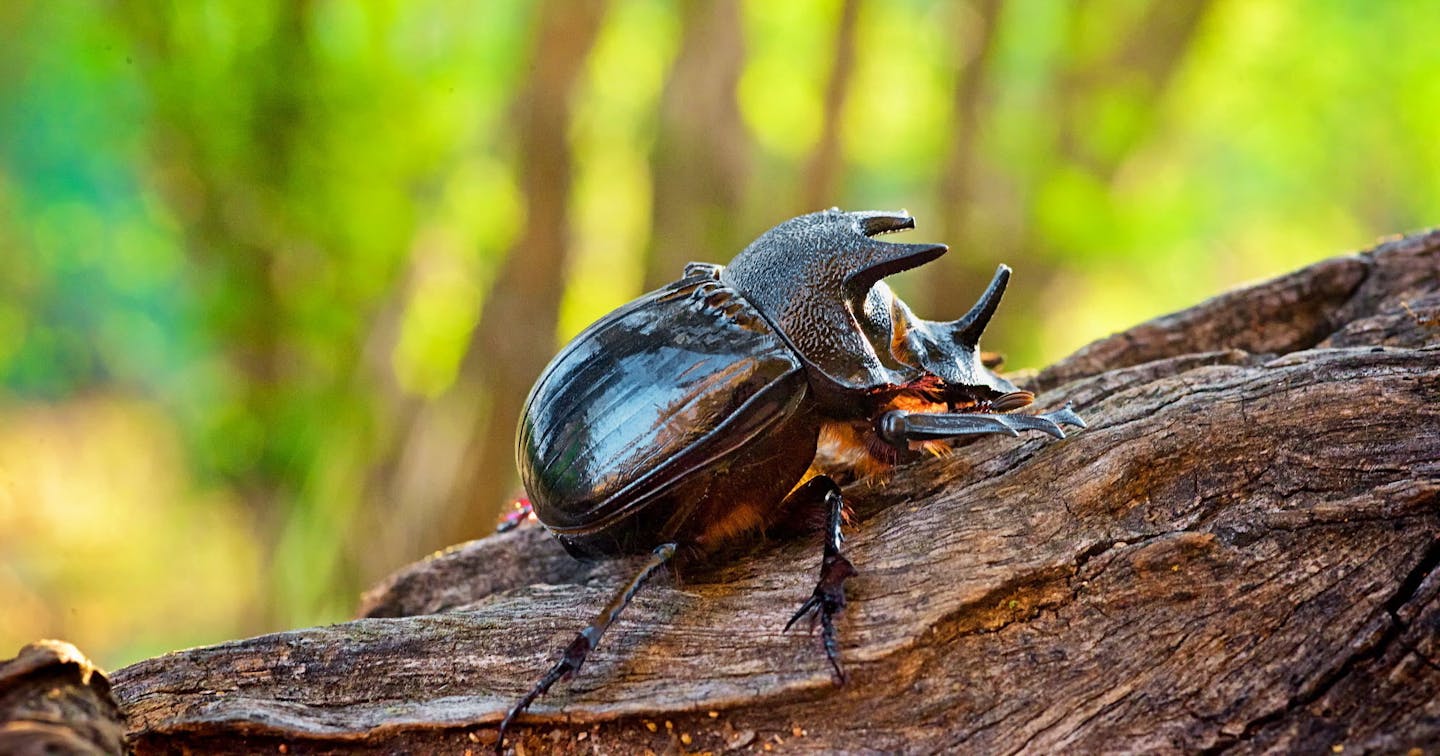Rhinoceros beetles: one of the strongest insects with horned heads
Each Wednesday, One Earth’s “Species of the Week” series highlights a relatively unknown and fascinating species to showcase the beauty, diversity, and remarkable characteristics of our shared planet Earth.
Dynastinae, Rhinoceros or Hercules beetle… no matter what you call it, this insect is a force of nature. A subfamily of the scarab beetle family, rhinoceros beetles are named for the horn-like projections on the males' heads. They can grow up to six inches, making them some of the largest beetles in the world. Another of the species, slightly smaller than the rhinoceros, is called the hercules beetle, due to its Herculean strength. Adults of these species can lift objects 850 times their weight. (That’d be like a human lifting twenty mid-sized cars.) These beetles are known to put their strength, and their horns, to use by quickly digging themselves into soil to escape danger.
All rhinoceros beetles are herbivorous, feeding on fruit, nectar, and tree sap that they tap with their horns. Such a gentle diet for a giant! The larvae eat decaying plant matter. Most Rhinoceros beetles are black, gray, or greenish in color, and some are covered in soft hairs. Though almost mythological in appearance, they are found on every continent on Earth except Antarctica. In the United States, they’re found from Arizona to Nebraska and eastward.

Rhinoceros Bettle. Image credit: Creative Commons
The male rhinoceros beetle is proudly posts a long, intimidating horn on its head that curves up, and is used for mating ritual fights. Additional, shorter horns project out from his head. Females are smaller and do not have horns. Females lay about 50 eggs, which hatch into larvae. Longevity varies among species, but a typical lifespan is one to two years, with much of that time spent in the larval stage.
When disturbed, or before mating with a female rhinoceros beetles produce hissing squeaks. These sounds are not vocal, but produced when the beetle rubs its abdomen and wing covers together.
This rhinoceros can fly short distances, although its heavy body makes for a bumpy and brief ride. Good thing, because although these insects are harmless, who’d want to have to dodge one flying through the air?

.png?auto=compress%2Cformat&w=200)

